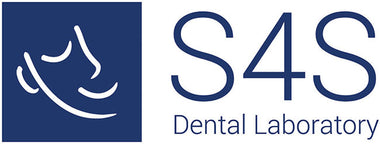Understanding Dental Terminology
Dental terminology is almost its own language, with lots of unique terms and numbers tossed around by the professionals. We want you to understand what you are reading on prescriptions so here’s a guide to understanding dental terminology, teeth names, areas of the mouth and especially what the numbers of the teeth mean.
Numbering of Teeth
Dentists have a chart that uses numbers to help them make notations of healthy and problem teeth. In the UK, we use the Palmer Notation Method. In other countries, such as the US, dentists use another system known as the Universal System, or in Canada where dentists use the ISO/FDI system. Below is the Charting for the Palmer system.

Fig:1


In other countries, such as the US, dentists use another system known as the Universal System, or in Canada, where dentists use the ISO/FDI system. As we manufacture appliances from many countries, we often see alternative notations on our prescriptions
The image below shows the alternative Numbering Systems

Fig:2
What Are the Different Types of Teeth Called?
Most adults have 32 teeth, called permanent or secondary teeth:
- 8 incisors
- 4 canines, also called cuspids
- 8 premolars, also called bicuspids
- 12 molars, including 4 wisdom teeth
Children have just 20 teeth, called primary, temporary, or milk teeth. They include the same 10 teeth in the upper and lower jaw:
- 4 incisors
- 2 canines
- 4 molars
Primary teeth start to erupt through the gums when a baby is about 6 months old. The lower incisors are usually the first primary teeth to come in. Most kids have all 20 of their primary teeth by age 3.
Children tend to lose their primary teeth between the ages of 6 and 12. They’re then replaced by permanent teeth. Molars are usually the first permanent teeth to come in. Most people have all of their permanent teeth in place by age 21.

Tooth Anatomy
When identifying teeth and referring to specific areas of a tooth, it is necessary to utilize named surfaces and directions designated according to where it is located.
- Distal – The surface that is away from the midline of the face.
- Facial – The surface that faces the cheeks or lips. Can also use the terms:
- Labial – The surface towards the lips.
- Buccal – The surface towards the cheeks.
- Incisal – The biting edge of an anterior tooth.
- Lingual – The surface that faces the tongue.
- Mesial – The surface that is closest to the midline of the face.
- Occlusal – The chewing surface of posterior teeth.
- Proximal – Tooth surfaces that are next to each other (i.e., distal of lateral incisor and mesial of canine).

Quadrants
The dentition is divided into quadrants:
UR - Upper right quadrant: upper right first incisor to upper right wisdom tooth
UL - Upper left quadrant: upper left first incisor to upper left wisdom tooth
LL - Lower right quadrant: lower right first incisor to lower right wisdom tooth
LR - Lower left quadrant: lower left first incisor to lower left wisdom tooth
The upper portions of your mouth are the first two quadrants, while the lower portions are the third and fourth ones. So, the top right of your mouth’s interior is quadrant one (that’s your right side), while your top left is quadrant two.
The bottom is a bit more confusing. Whereas the upper part numbers the right side first, it’s the opposite for the bottom. The bottom left is quadrant three, and the bottom right is quadrant four.
From the dentist’s perspective, they look into your mouth up and down. It’s easiest to list the quadrants such that the section under quadrant two is quadrant three.

